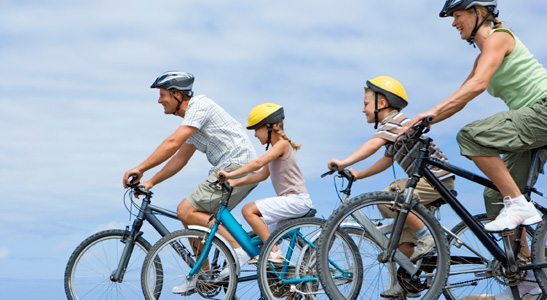Did you know that according to statistics, 80 percent of how long we live is based on how we live — our lifestyles, habits and culture — while only 20 percent is based on genetics or our access to basic healthcare.
In 2004, Dan Buettner joined with National Geographic to identify specific locations that exhibited instances of longer life. Five specific demographics were discovered around the world. Referred to as “Blue Zones,” they had commonalities in collective-community healthy living, environmental sustainability and responsible economic growth. What do Blue Zones have to do with Arizona? According to the mission of Arizona Forward: everything.
“One of our stewardships brought in a speaker from Blue Zones,” says Diane Brossart, president and CEO of Arizona Forward. “It’s a science, and one that Arizona Forward would love to see happen in our state.”
Arizona may not yet be the sixth Blue Zone, but we may turn a hue of blue sooner than you think. Arizona Forward’s mission and vision match the characteristics of longevity-prone zones: low-environmental impact, high sustainability and overall health and wellness amidst ever-expanding economic growth.
According to Brossart, a recent report ranked Arizona ninth in the nation for physical emotional and mental wellness — a jump from 19th place last year.
Economic growth and wellness
As Arizona continues to expand, how are we keeping up in efforts to improve health, wellness, sustainability and environmental integrity?
“Arizona Forward focuses on the balance of economic growth and environmental quality,” Brossart says. “Cities and communities become stronger when practicing sustainability.”
“Much of the last 50 to 100 years has been about unparalleled economic expansion,” adds Vitalyst Director of Communications Jon Ford. “Based on the results of hockey-stick growth and the impact it produced in terms of health and sustainability, it’s time to rethink, reconnect and reimagine our way forward.”
Ford, who has been heavily involved with Arizona Forward for the past few years and is on the board of directors’ Communications Committee and Healthy Communities and Sustainable Growth Committee, has pinpointed the interconnectivity of health and sustainability in Phoenix, Tucson, Jerome, Flagstaff, the Verde Valley, Yuma, Rio Rico and others.
What specifically are these communities doing to fit the environmentally responsible and sustainable mold? Brossart points to Peoria as one example.
“Peoria created a cross-generational community garden, transformed from a vacant property in Old Town,” Brossart says. “What was once a blemish was transformed by master gardeners, high school students and residents within the community.”
In addition to its community gardens, Peoria was recognized for several other environmental efforts, receiving several Environmental Excellence awards this year.
Brossart also references Phoenix, Gilbert and Tempe for creating and maintaining initiatives for more healthy and sustainable communities.
“About five years ago, Phoenix hired a Chief Sustainability Officer Mark Hartman, who put together a sustainability plan adopted by Mayor Greg Stanton,” Brossart says. “Tempe is known for it’s walkability and Gilbert for it’s livability measures.”
Other examples of sustainability reside in cross-community infrastructure implementations and improvements such as the Grand Canalscape project, designed to connect transportation and recreation throughout Phoenix, Tempe and Glendale. And, of course, there’s the light rail collaboration between Phoenix, Tempe and Mesa.
“These efforts toward more walkable and multi-modal living has a direct impact on health, well-being and social and cultural cohesion,” Ford says. “These make for better places to live, connecting more people to jobs and providing more opportunities for healthy living.”
Arizona Forward motion
It’s clear that while Arizona expands and communities develop that environmental sustainability and accommodating health and wellness continue to evolve — parks, trails, gardens, community yoga, etc.
“Promoting environmental integrity is the current trend,” says AECOM Associate Vice President Jennifer Pyne. “To have a sustainable future has everything to do with our economic and environmental integrity. Living effectively will require sustainability.”
As Arizona Forward and partners move ahead to achieve these initiatives for existing and future communities, Brossart stresses the importance of public, private and government relationships moving forward.
“Small and large corporations and business like Vitalyst and Honeywell, combined with Arizona cities like Sedona, Cottonwood and Tucson; and smaller architectural companies are working together to form a stronger state. As a nonpartisan entity, we are able to take the politics out of it,” Brossart says.
Brossart elaborates that effecting positive and lasting change requires collaboration to work successfully. Both public and private sectors have individual bureaucracies, which make it even more vital for cooperation in matters of environmental and sustainable integrity.
“It’s not an ‘either-or’ mindset that will get things done,” Ford says. “It’s a ‘both-and’ perspective that Arizona Forward is embracing, taking into account the larger and smaller discussions.”
It takes a village — and individuals, too
Bossart believes, as admittedly cliché as it may be, that progressing economic growth through environmental and health-conscious means literally “takes a village” to accomplish. Since a village is made up of groups of individuals, each person has the power to effect change.
“I think the more people that become involved in understanding, voting in their communities and thinking less narrowly about health and more about how health affect their community, the more we will achieve our goals toward establishing vital and healthy environments,” Pyne says.
Ford believes that public health and community design are powerful tools in working toward transformative changes to create a positive health impact.
“The good news is that once you see your community through a health and well-being lens, it is hard to ‘unsee’ the opportunities to improve it,” he says.
Brossart stresses that awareness is a valuable first step.
“Attend city council meetings,” she says, “Bring a vision of what you want to see in your community. And find your passion This is your home. We need to help manage it ourselves.”




